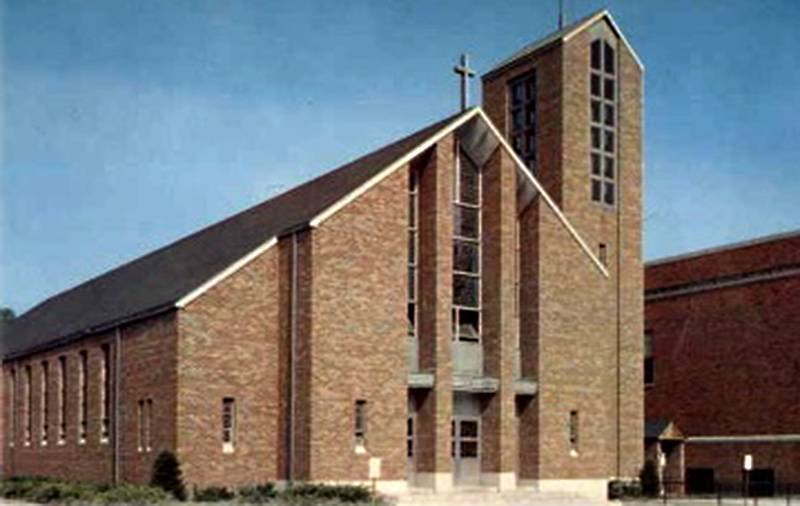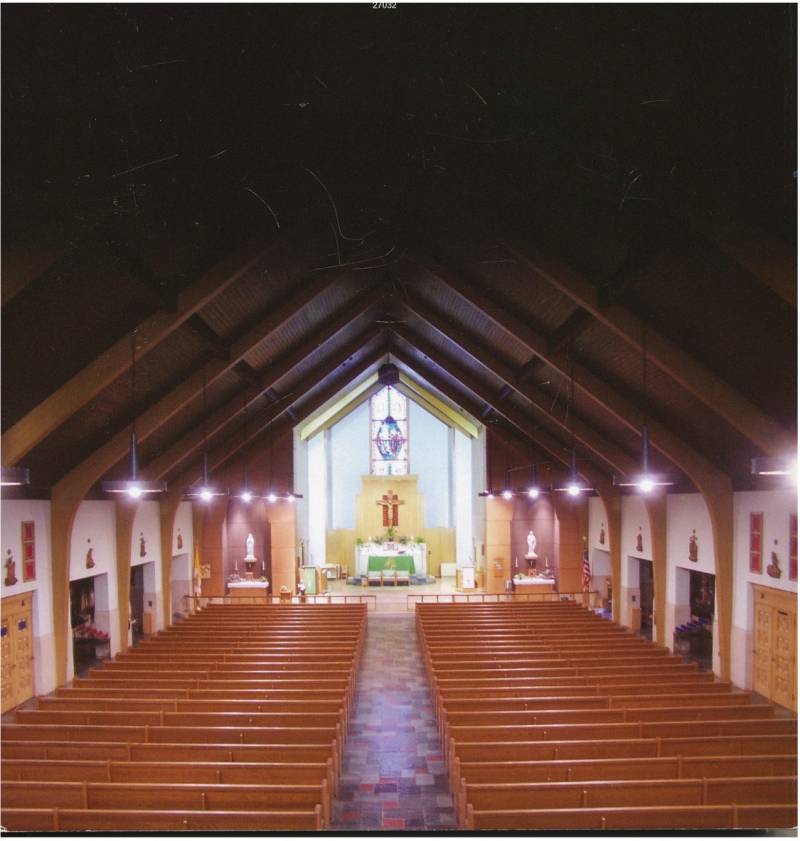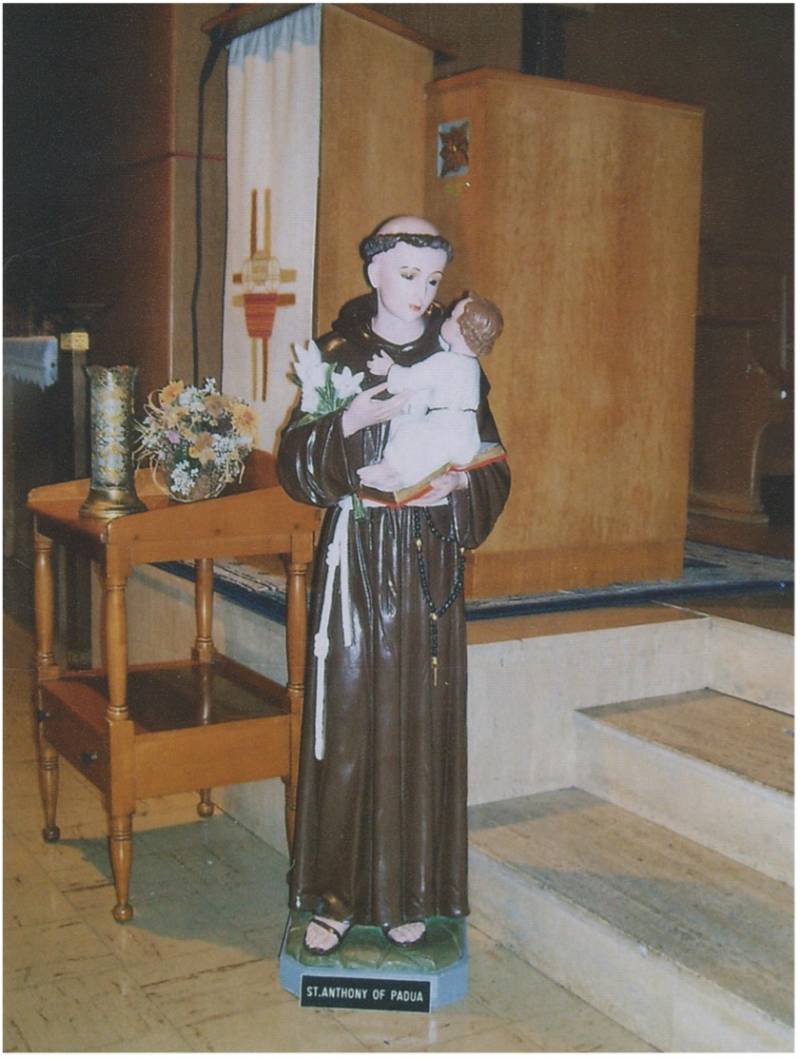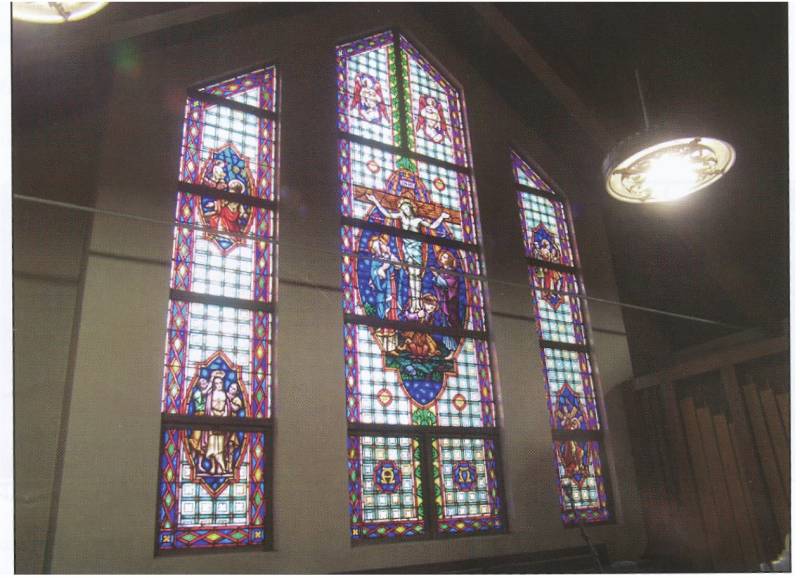
In 1955, a new Catholic church opened on Liberty Street and Central Avenue in Batavia. One local woman remembers her Italian grandmother as a young girl of 5 and how excited she was about the new church—but also how very upset she grew as her granddaughters talked during the Mass.
Today, the woman can recall how she was removed from the pew and taken to a room for noisy children. Later on, this young girl grew up, joined St. Anthony’s Parish, had her children baptized and confirmed at the church, and continued attending weekly Mass on Liberty Street.
One Saturday in 2011, as she was sitting in her favorite pew, she looked around at the beautiful architecture of St. Anthony’s Church, imagining all of the milestones in this church. The church was decorated for Christmas, and the altar was surrounded by poinsettias with the added touch of little white lights. It is hard to believe that this church, like many other churches of various denominations, was facing the same fate of having to close its doors.
Sacred Heart and St. Anthony’s Church were consolidated in 2007 to form Ascension Parish, but the two churches were also referred to by their respective names. The merger combined the church bodies, finances, and administration under one roof, a linkage that united the churches with a shared priest. Masses were held at both churches, which were then called Ascension Parish east and west.
On Dec. 31, 2012, the doors of this 104-year-old Catholic Church were closed. Ascension Parish/St. Anthony’s Parish would no longer exist. Liberty Street and Central Avenue corner and side streets are no longer filled with cars for Saturday and Sunday worship.
Many people will look back and remember the day the first Mass was held in the new church, the day they entered St. Anthony’s School in their brown uniform, or when their family celebrated a marriage in the church and their wedding reception in the Community Center/school. Many beautiful memories are connected with all three areas.
St. Anthony’s story began in 1908 when 150 families of Italian descent lived in Batavia, most of them on Ellicott, Thorp, and Hutchins streets. This was the result of a significant influx of immigrants to this area, and it became necessary to build a place of worship. Bishop Colton of Buffalo appointed Rev. Hyacinth Ciabbatoni to go to Batavia and organize a chapel church for the Italians.
The first Mass was celebrated in Teresi’s Hall on Ellicott Street in 1908. Shortly after that, Rev. Ciabbatoni bought the Sheer Property on Ellicott Street and Liberty Street. He had the house on the property rebuilt to serve as a church. The lot was purchased for $5,800. There was a 50/50 chance the new church’s name could be called St. Michael’s. The two names were put into a hat, and St. Anthony’s name was chosen; hence, St. Anthony’s Church was born.
The average monthly collection was around $58. A year later, Rev. Joseph Laguzzi was transferred to Batavia. He bought additional property on Central Avenue to enlarge the church. Services were held on the first floor, and a school was set up above, organized by Two Sisters of Mercy. Now that a new church was established, a new school was recommended.
In 1911, a small four-classroom school was built, but by 1913 it was closed. In 1916, St. Anthony’s had a new pastor, Rev. Victor Fassetta. He opened the school and had plans for a new church. The original small church caught fire in 1917. Rev. Victor Fasetta served as pastor until he died in 1918. He was replaced by Father William Kirby, St. Anthony’s fourth pastor. Father Kirby had two missions: one was for a new school, and the other for a new church.
In 1920, Father Kirby had a temporary building erected on the corner of Central and Liberty, and the building previously owned by the church was taken down. The parishioners were so excited about the church that they gathered enough money for a bell for the steeple, and had to store it until the new church was built. Father Kirby started a drive for funds to replace the makeshift quarters occupied by the church and school.
In 1929, a drive for a new school was established. At the cost of $100,000, the school would also be a community center for athletic and social events. Frank Homelius prepared the plans, and Andrew Schneckenburger was the building contractor.
Father Kirby’s second objective was a new church. From 1919 to 1920 he had a temporary building erected on the corner of Central and Liberty as the building that was then in use was torn down. He had the foundation built on the site of the former building. The new structure was generous in size but not very attractive from the street. This basement was furnished as a church and served as one until December 1954.
In 1953, Father Kirby again asked for funds to build a new church and set the goal of $100,000. Before the month was over, he had $112,000. Plans were drawn, and Carl Espersen of Batavia was given the contract to build them. Leo R. Smith laid the cornerstone in April 1954.
Father Kirby had promised parish members they would celebrate Christmas Mass the following year. On Dec. 20, 1955, Father Kirby served Mass from the new altar. The new church could seat 700 worshippers. The church’s décor combined modern and traditional architecture with a simple classical front and bell tower. The main body had wainscoting. Carrara marble was used in the interior of the sanctuary. There was a hand-carved crucifix with a decorative window depicting St. Anthony of Padua. The altar was also made out of Carrara marble. On the two sides of the altar were niches for the statues of the various patron saints.
Father William Kirby served 47 years in Batavia. In November 1964, he rose to the title of Monsignor and became one of the community’s most honored and beloved men. When Monsignor Kirby became ill, Father Paschal Aquavia was named administrator. In 1964, a new rectory and offices were built.
St. Anthony’s, like all Catholic churches, had many societies within the church: The Holy Name Society, Altar and Rosary Society, St. Nicholas di Bari Society, St. Michael the Archangel Society, Our Lady of Loretto Society, St. Joseph’s Table Committee and Msgr. Kirby’s Knights of Columbus.
From 1966 to 1983, significant projects were undertaken to revamp the heating system and the parking facilities. After many discussions, the Ascension Parish Council recommended to Bishop Richard Malone of the Diocese of Buffalo that St. Anthony’s no longer be utilized. The decision took effect in January 2013. The council cited financial difficulties in the decision. Kevin Keenan, a spokesperson for the Diocese of Buffalo, said that several factors contributed to economic problems for local Catholic churches, such as fewer priests, fewer baptisms, and a declining population. Keenan said the decision would benefit the parish’s mission.
“What they do is, they put parishes in a position where they can put more of their resources into ministry and not so much into the maintenance of buildings that may be underutilized,” Keenan said.
If Bishop Malone approved the recommendation, all Ascension activities would be moved to Sacred Heart. On Sunday, Dec. 2, 2012, the recommendation was accepted at Mass in St. Anthony’s Church.
After a Mass by the Bishop of Buffalo on Jan. 13, and with much sadness, St. Anthony’s Church doors were closed for good. All that is left are the memories the faithful parishioners carry in their hearts about their church, St. Anthony’s.
Submitted Photos of St. Anthony's Church.



